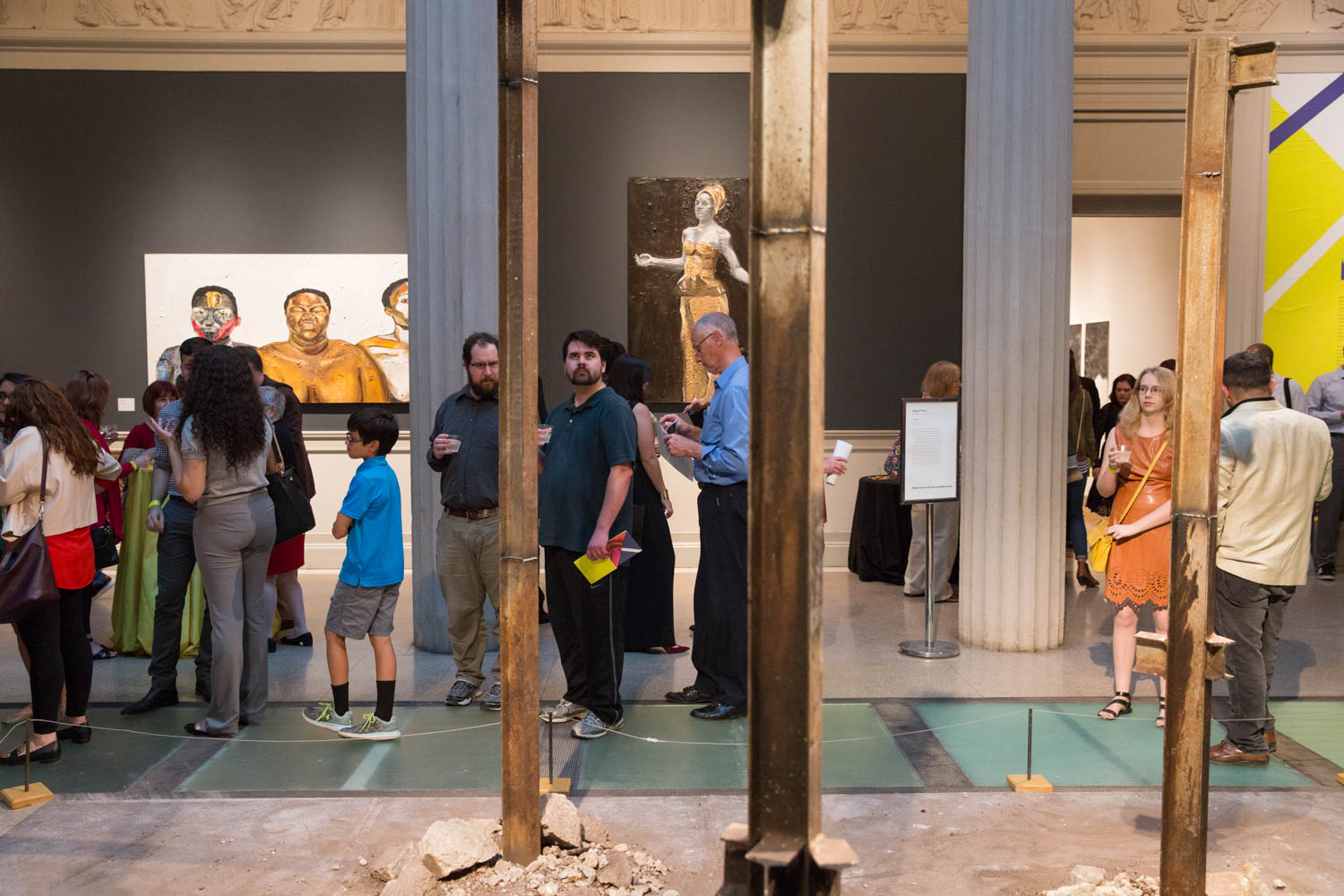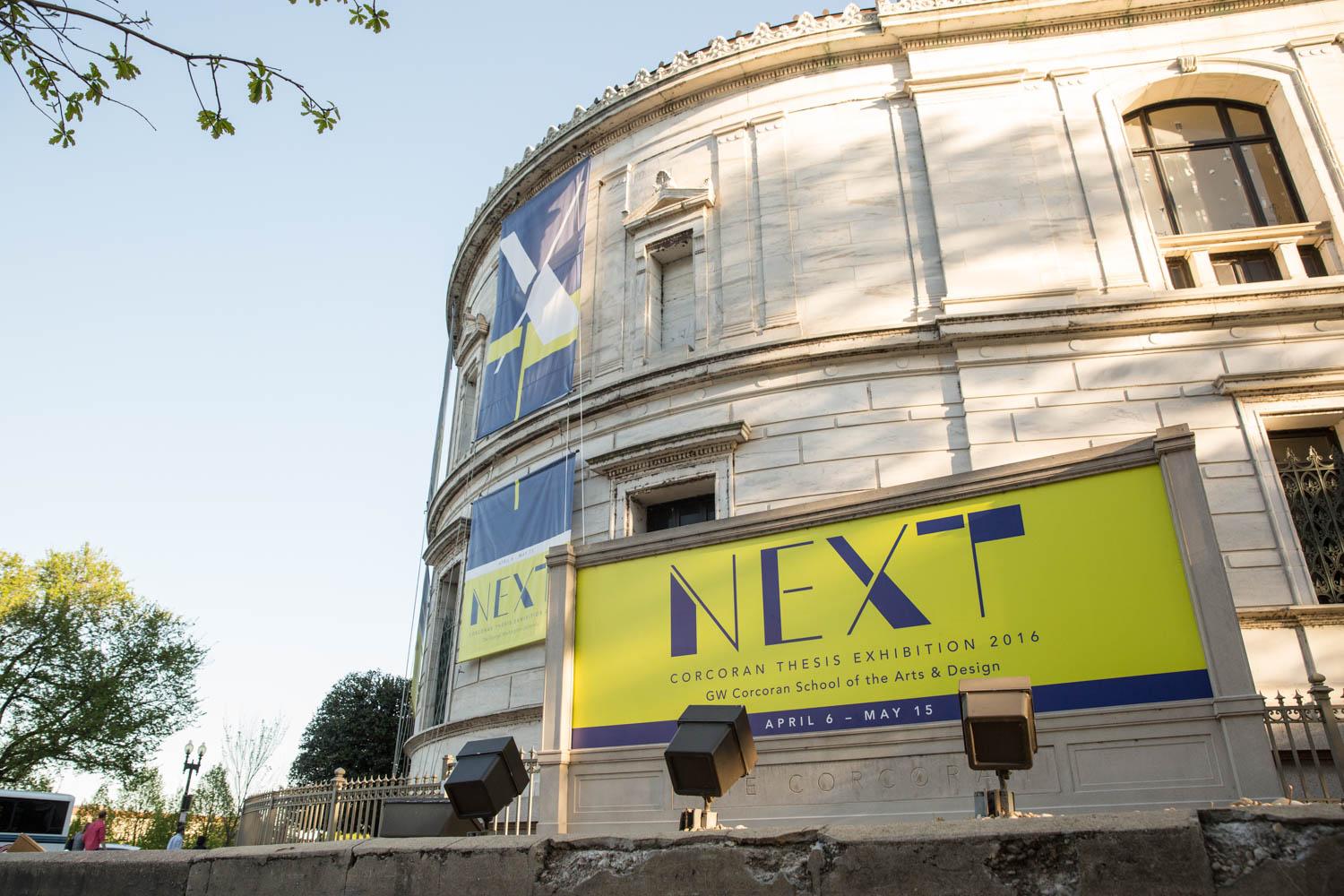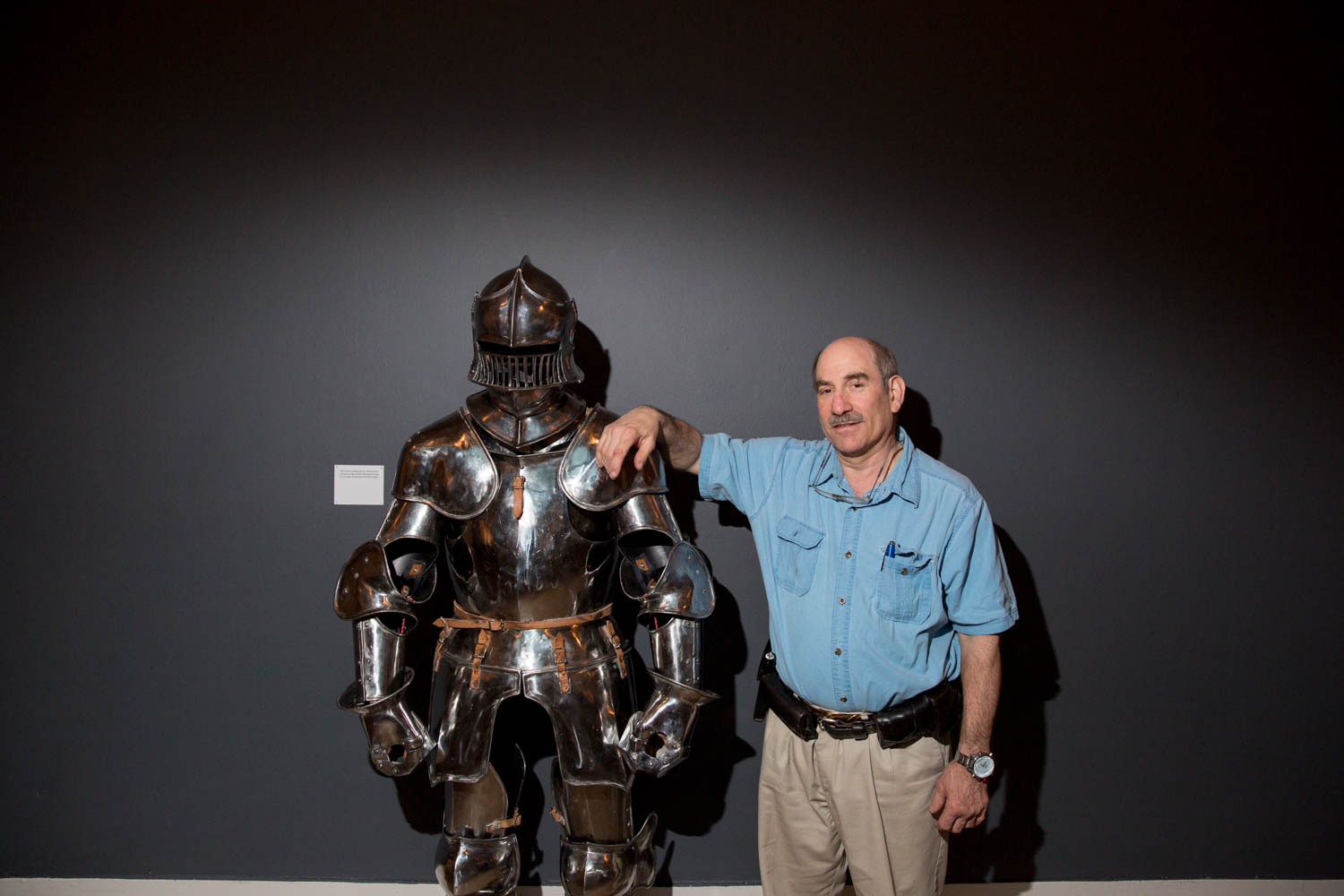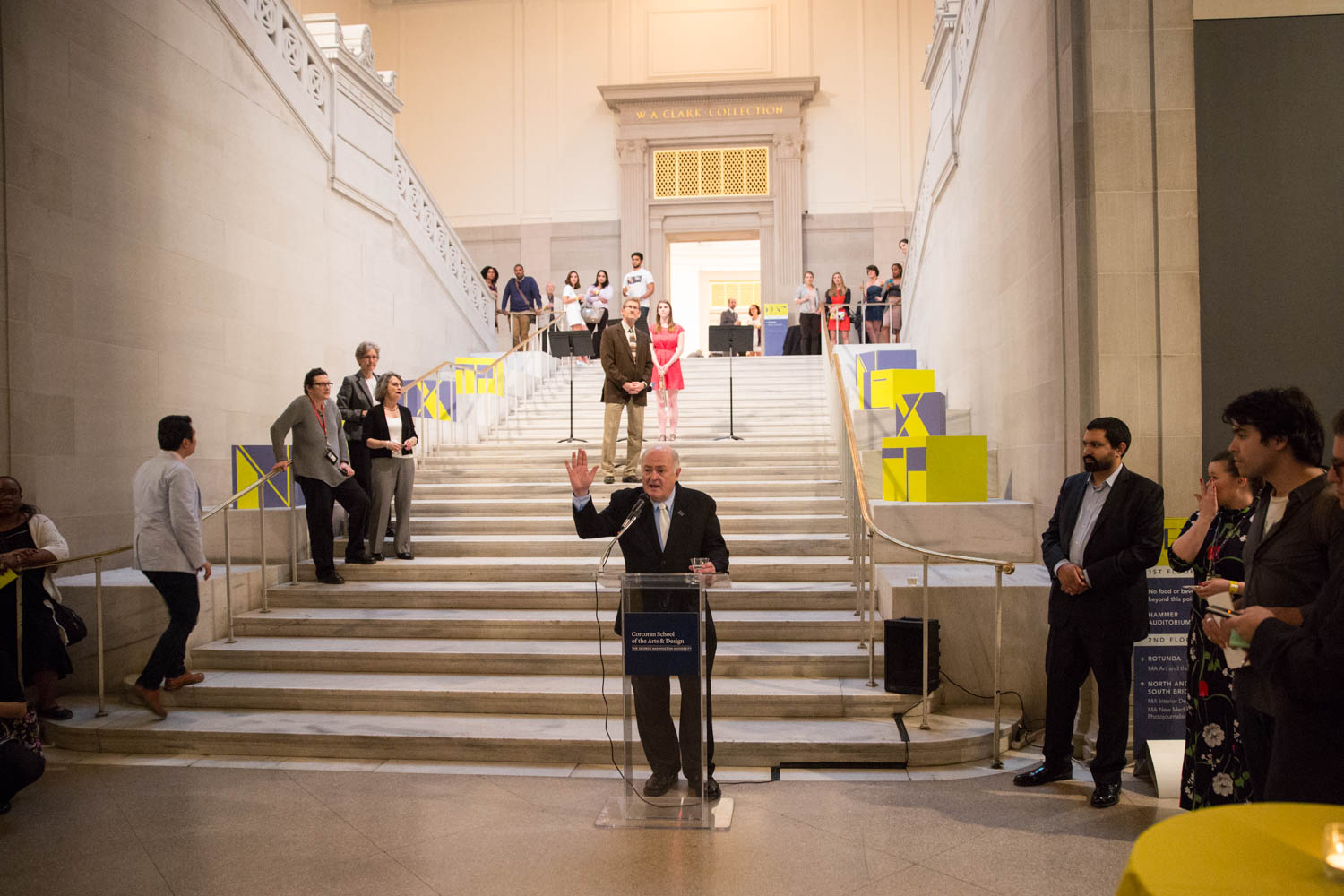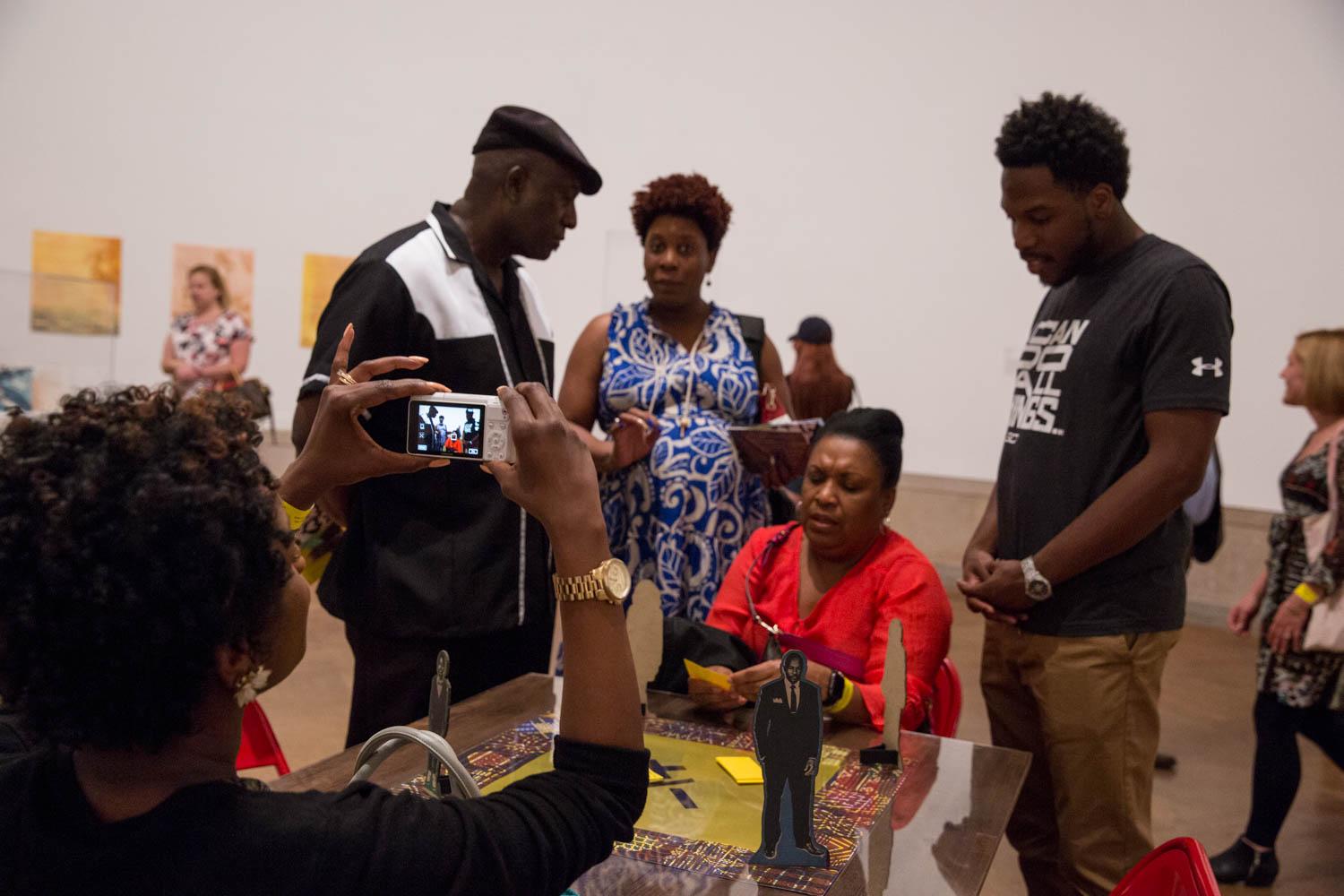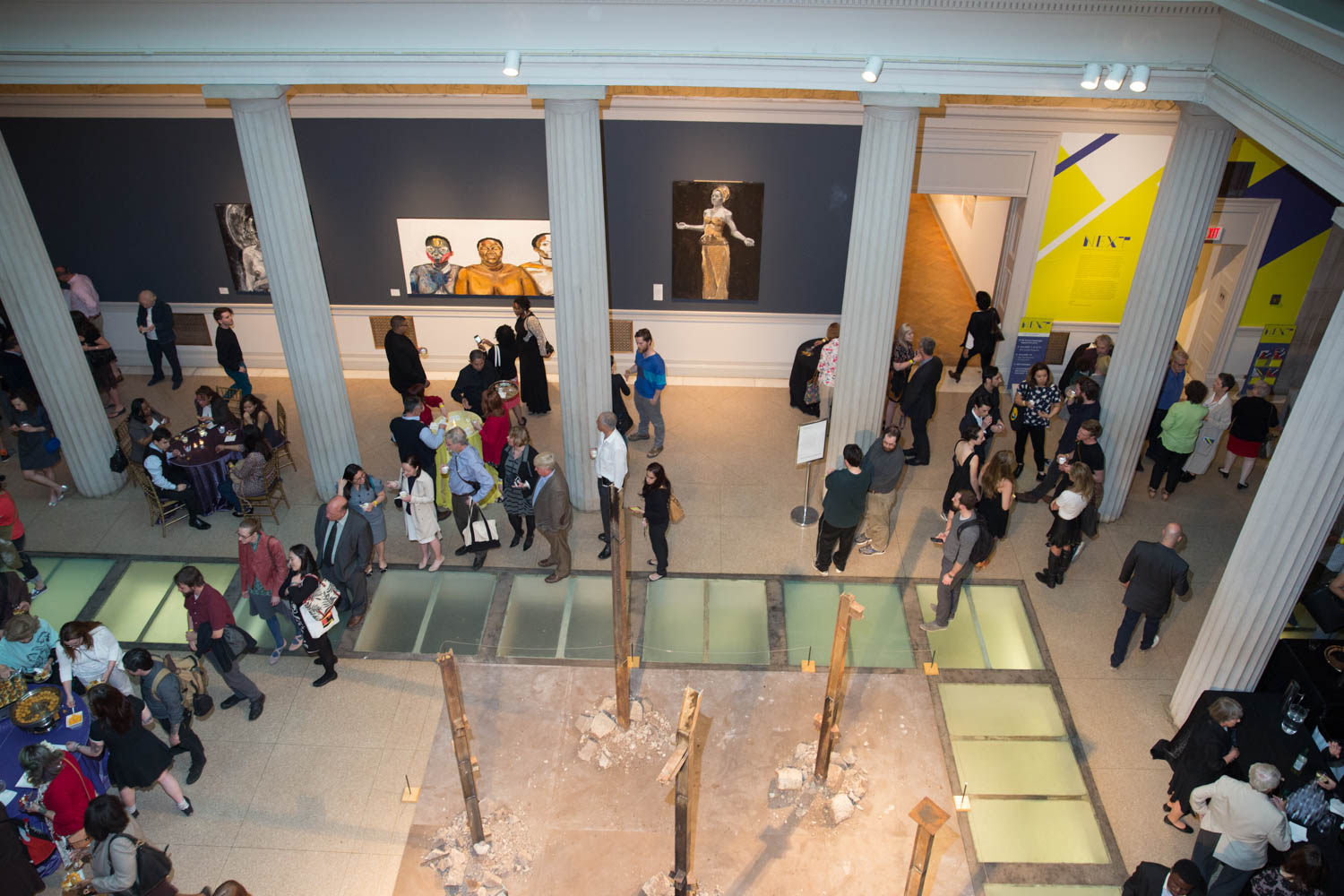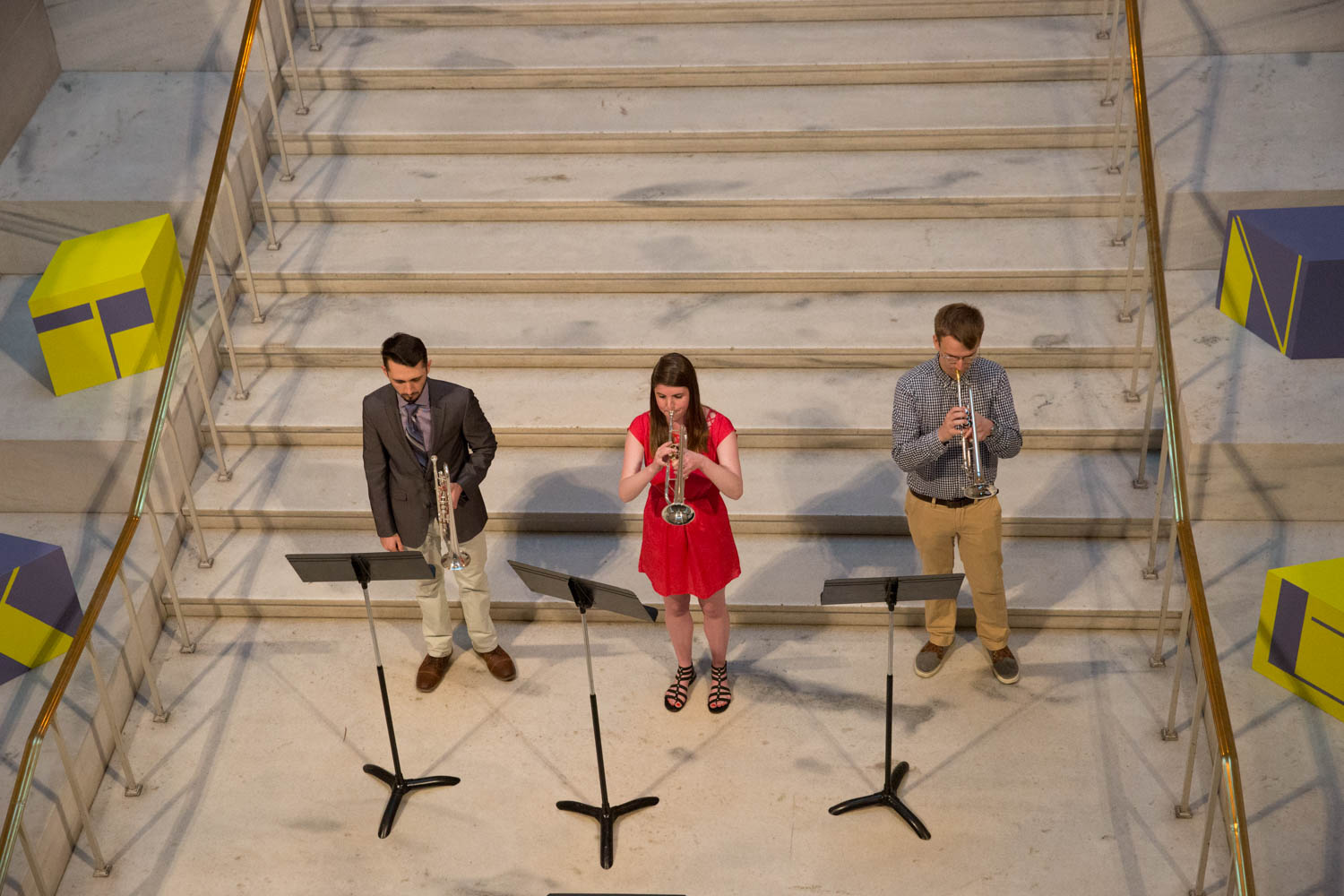By Menachem Wecker
The Corcoran’s Flagg building was so packed with visitors Wednesday night for the opening of the NEXT exhibit that it took Sanjit Sethi, Corcoran School director, several minutes to begin to quiet people down to introduce George Washington President Steven Knapp.
“I don’t think I’ve seen a crowd this large here in the Corcoran in all of the years I’ve lived right up the street,” Dr. Knapp told the audience of more than 800 people. “The students display an incredible diligence, talent, ingenuity and creativity in everything we are seeing here.
“We are, all of us at George Washington University, beyond measure proud to have all of you as part of our university community.”
Speaking later with George Washington Today, Dr. Knapp noted that the show of projects represents the culmination of years of student effort, and that undergraduates appeared to be working at graduate levels.
“One of the things that really struck me as new this year was how many of the projects made use of technology on our main campus,” Dr. Knapp said. “That’s what we hoped would happen: an innovative model for arts education really taking root here. What we need to do for next year is expand this further beyond the Corcoran and embrace other parts of campus. I think we can make this a bigger, campus-wide event, without losing focus on the talent of students right here.”
Mr. Sethi noted in an interview how remarkable it was that art, such as the student work on display, could transform an anonymous space into a particular kind of environment.
“I think you really see that with students, who have an opportunity to show in a historic environment,” he said. “The idea of placing work that’s about issues around race, class, ethnicity, formal concepts around wear and tear of a material, or what a ballpoint pen can do under extreme duress, and to contextualize that in a space with phenomenally-high ceilings and such a history is a great counterpoint towards the sweat equity that these students have put in over the years that they’ve been here.”
Media photojournalism master’s candidate Andrew Windham put that kind of effort into his thesis documentary project “Ourselves.” The film follows a transgender couple, Mikey and DJ, as both transition from female to male. Mr. Windham spent so much time with them that he jokes he became part of their relationship. Although the two recently broke up, he intends to continue to document the aftermath of their split.
NEXT, he said, “without a doubt has been a powerful exhibition,” and the variety of his colleagues’ artwork has amazed him.
Looking around at the works in the show, Mr. Sethi said he is excited to see that materiality is still important to young artists.
“People are still exploring what a material can do, and what it can’t do,” he said. “At the same time, these dialogues are complex. They’re asymmetric. They’re sticky. They’re not the binary between conceptual and formal. They’re much more merged together, and I think that’s particularly exciting.”


